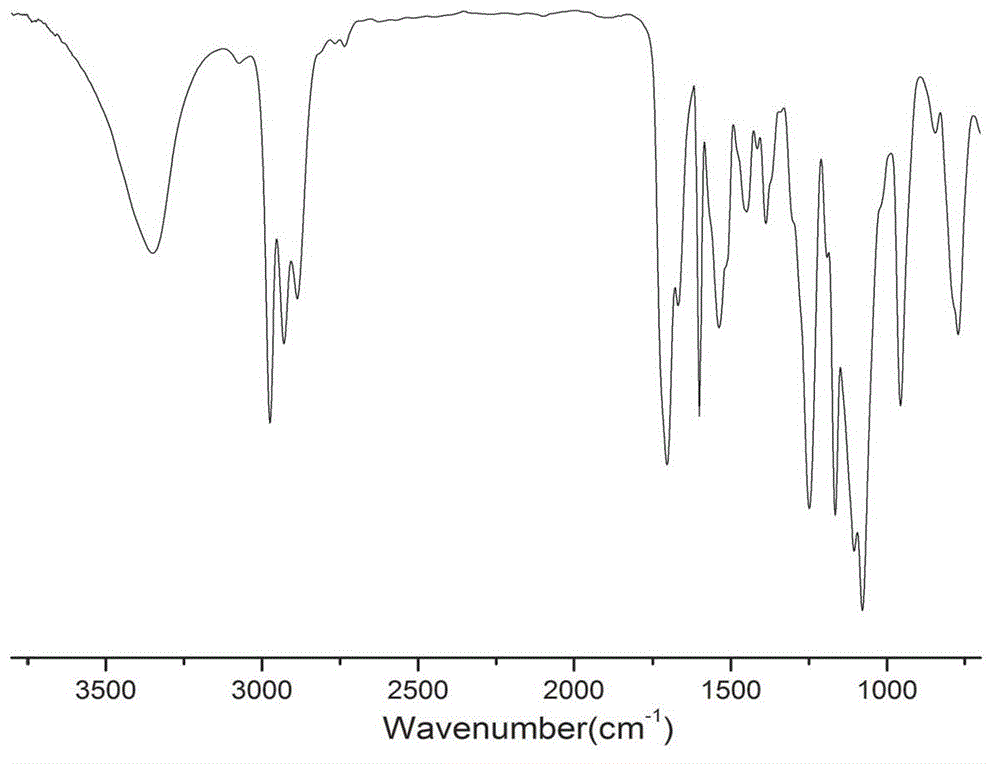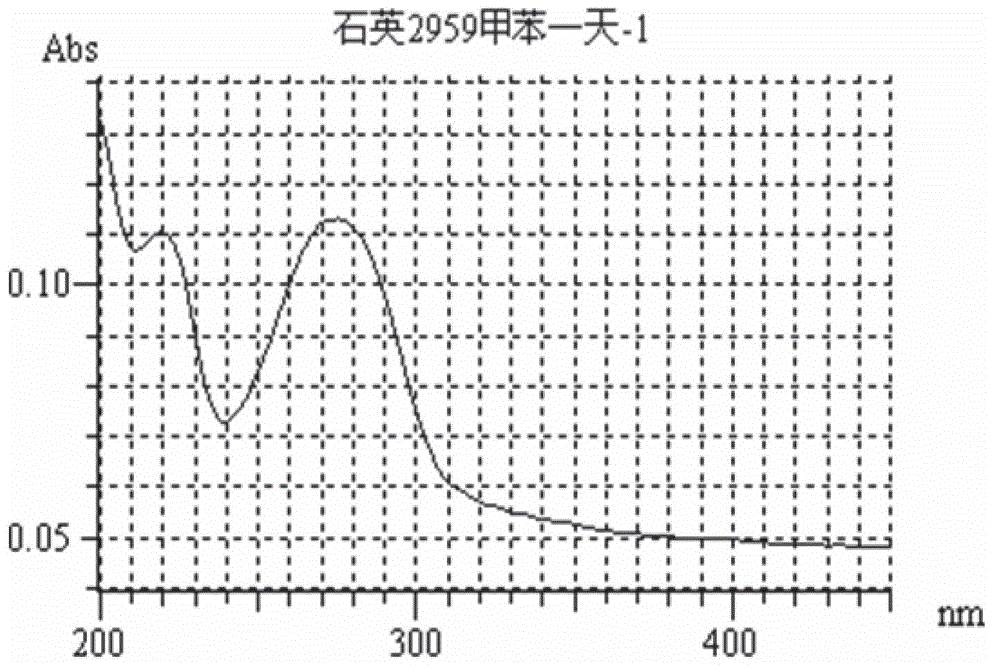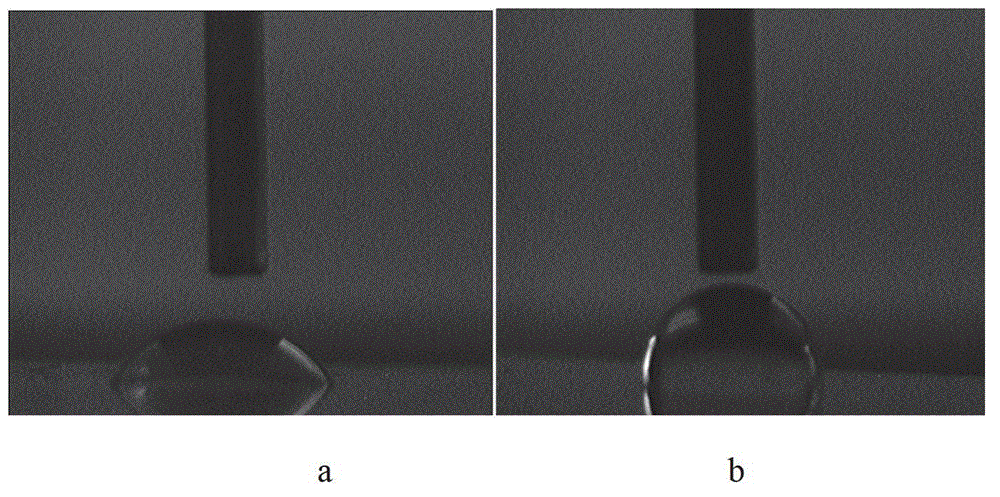Method for preparing waterproof and antifogging surface modified glass
A surface modification and anti-fog technology, applied in the field of waterproof and anti-fog glass, can solve the problems of poor adhesion, uniformity and performance stability of self-assembled molecular films, and achieve the advantages of easy industrialization of products, improved weather resistance, and improved hydrophobicity. Effect
- Summary
- Abstract
- Description
- Claims
- Application Information
AI Technical Summary
Problems solved by technology
Method used
Image
Examples
Embodiment 1
[0030] (1) Synthesis of silicon-containing photoinitiator: the molar ratio of isocyanate-containing silane coupling agent and 2-hydroxy-4-(2-hydroxyethoxy)-2-methylpropiophenone is 2:1 The reaction was carried out in dehydrated ethyl acetate, using dibutyltin dilaurate DBTDL as a catalyst, and the added amount of the catalyst accounted for 0.05% of the mass fraction of the reactant. The reaction was carried out for 4 hours to obtain a silicon-containing photoinitiator. The product is tested by infrared.
[0031] (2) Hydroxylation of the glass surface: use a glass slide, use deionized water, ethanol, and acetone respectively to sonicate for 10 minutes, then, 98% concentrated sulfuric acid by mass percentage: 30% hydrogen peroxide by volume ratio Soak the slides in the washing solution prepared at 7:3 for 10 hours to remove the insoluble organic matter on the surface of the slides, and at the same time form hydroxyl-rich slides.
[0032] (3) Chemically bond the silicon-containing ph...
Embodiment 2
[0037] (1) Synthesis of silicon-containing photoinitiator: the molar ratio of isocyanate-containing silane coupling agent and 2-hydroxy-4-(2-hydroxyethoxy)-2-methylpropiophenone is 3:1 The reaction was carried out in dehydrated ethyl acetate, using dibutyltin dilaurate DBTDL as a catalyst, the added amount of the catalyst accounted for 0.1% of the mass fraction of the reactant, and reacted for 6 hours to obtain a silicon-containing photoinitiator. The product is tested by infrared.
[0038] (2) Hydroxylation of the glass surface: use a glass slide, use deionized water, ethanol, and acetone respectively to ultrasonic for 20 minutes, then, 98% by mass concentrated sulfuric acid: 30% by mass hydrogen peroxide according to the volume ratio The 7:3 washing solution soaks the slides for 17 hours to remove the insoluble organic matter on the surface of the slides and at the same time form hydroxyl-rich slides.
[0039] (3) Chemically bond the silicon-containing photoinitiator in step (1)...
Embodiment 3
[0044] (1) Synthesis of silicon-containing photoinitiator: the molar ratio of isocyanate-containing silane coupling agent and 2-hydroxy-4-(2-hydroxyethoxy)-2-methylpropiophenone is 4:1 It is reacted in dehydrated ethyl acetate, using dibutyl tin dilaurate DBTDL as a catalyst, and the catalyst is added in an amount of 0.2% of the mass fraction of the reactant. The reaction is conducted for 8 hours to obtain a silicon-containing photoinitiator. The product is tested by infrared.
[0045] (2) Hydroxylation of the glass surface: use a glass slide, use deionized water, ethanol, and acetone respectively to sonicate for 30 minutes, then, 98% concentrated sulfuric acid with a mass percentage concentration of 98%: hydrogen peroxide with a mass percentage concentration of 30% according to the volume ratio The washing solution prepared at 7:3 soaks the slides for 24 hours to remove the insoluble organic matter on the surface of the slides, and at the same time form a hydroxylated glass slid...
PUM
 Login to View More
Login to View More Abstract
Description
Claims
Application Information
 Login to View More
Login to View More - R&D
- Intellectual Property
- Life Sciences
- Materials
- Tech Scout
- Unparalleled Data Quality
- Higher Quality Content
- 60% Fewer Hallucinations
Browse by: Latest US Patents, China's latest patents, Technical Efficacy Thesaurus, Application Domain, Technology Topic, Popular Technical Reports.
© 2025 PatSnap. All rights reserved.Legal|Privacy policy|Modern Slavery Act Transparency Statement|Sitemap|About US| Contact US: help@patsnap.com



